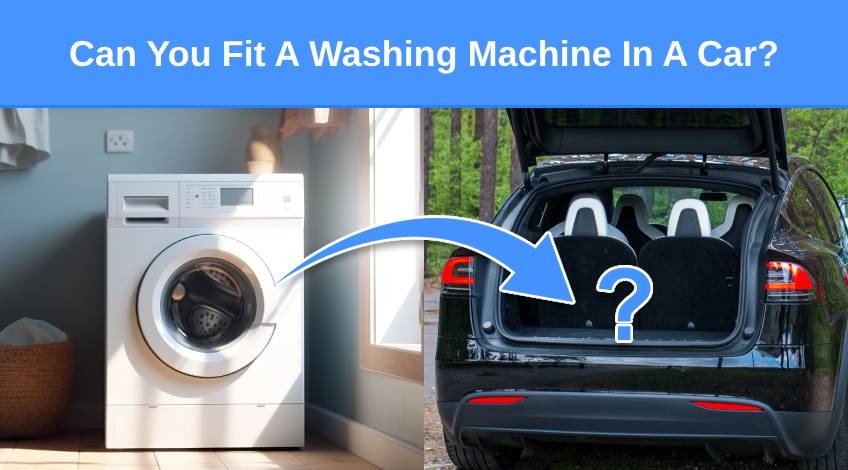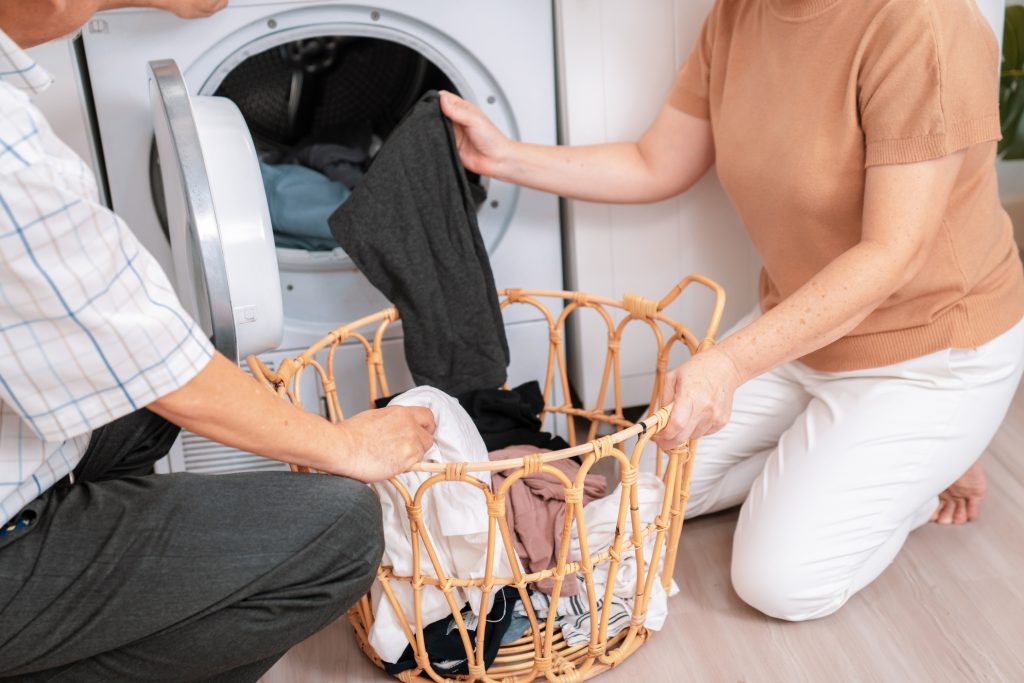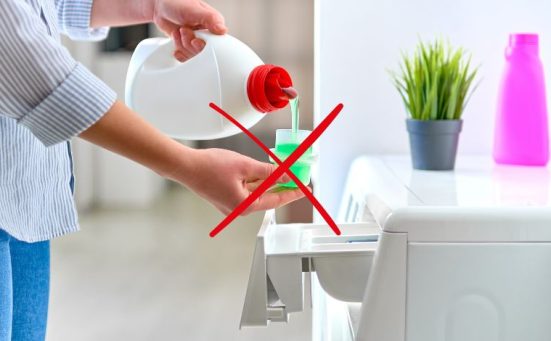
Can You Fit A Washing Machine In A Car? (What You Need to Know)
So, you find yourself in a situation where you need to transport your washing machine. Maybe you’re moving to a new home, or saying farewell to an old, unrepairable washer.
The big question: can you fit a washing machine in a car?
Well, here’s the scoop: laying your washing machine on its back or on its side while it’s travelling in a car might not be the best idea. It could potentially cause damage.
But fret not, we’re here to guide you through the process and offer some handy tips to guarantee a smooth journey for your washer.
What You Need To Know Before Moving Your Washer
Before we dive into the nitty-gritty, the size of your car and the distance you’ll be travelling play important roles in your washing machine transportation.
If you drive a small car or a larger SUV, you might be in luck. Most hatchbacks, estate cars, and even some SUVs can accommodate a washing machine.
The catch? You need to prepare it for the journey.
First things first, drain the water from the hose – you don’t want any surprise leaks on the way. Lay down an old blanket to cushion your washer and prevent unwanted scratches.
Now, here’s where things get interesting. The main factor is your reason for moving the washing machine.

What’s Your Reason For Moving It?
The first thing to consider is why you’re moving your washing machine. The way you position it in your vehicle will depend on your intentions.
Using It After The Move
If your plan is to use the washing machine immediately after the move, you’ll want to move it in a way that keeps it safe and ready for action.
The best position for this scenario is to keep it upright. However, there are some additional tips for transporting top-load washers, which we’ll cover shortly.
Taking It To The Dump
On the other hand, if you’re saying goodbye to your old washing machine because it’s beyond repair, you have more flexibility in how you transport it.
Since there’s no concern about harming the appliance further, you can move it in a manner that suits you best. However, it’s essential to dispose of it properly.
One responsible way to say goodbye to your old washing machine is to utilise the removal service offered by your retailer. This service is often cheap and convenient.
Alternatively, you can hire assistance to dispose of not only your washing machine but also other appliances like fridges and freezers.
Recycling centres in the UK typically accept washing machines, but it’s a good practice to call them beforehand to confirm that they’ll accept your appliance.
Will Your Washing Machine Fit In Your Car?
Now for the big question: will your washing machine fit in your car? Well, it depends on the size of your washing machine and the type of car you’re driving.
If you have a portable or small-sized washer, good news! It should fit in most hatchbacks with ease. Even some medium-sized washing machines can make the journey if you’re willing to fold down the back seats of your car.
However, when it comes to commercial-sized washers, you’ll need something larger in size – a truck, perhaps.
To determine whether your washing machine will squeeze into your car, you’ll need to know its measurements.
Unfortunately, there’s no standard size for washing machines since models and designs differ. You can usually find the specific measurements in your washer’s manual or on its original packaging. If not, grab a tape measure and do it the old-fashioned way.
Once you have the height, width, and depth of your washer, compare these dimensions to your car’s trunk opening.
A few extra inches of wiggle room on the top and sides will help prevent any scratches to your washing machine and car. Don’t forget to toss in some pillows or soft materials to keep it snug and secure during the ride.

Don’t Forget Your Washer’s Plumbing
Before you can begin moving your washing machine, there’s one more crucial step: disconnecting your washer from the plumbing.
If you’re a DIY enthusiast, you can handle this task yourself. Simply turn off the water valves located behind the washing machine. Typically, these valves are easily recognizable by their blue and red colours.
If you’re not entirely confident in your plumbing, don’t hesitate to get the help of a professional plumber. It’s better to be safe than sorry.
Use The Original Transit Packaging If Possible (or improvise)
The original transit packaging is the protective materials provided by the manufacturer when you first got your washing machine. These materials may include transit bolts, foam padding, brackets, or packaging inserts that are used to secure and stabilise the drum and other moving parts of the washing machine during shipping.
If you still have the original transit packaging of your washing machine, you can find instructions from the appliance manual. Some washing machines, like Miele, have parts that can be clipped to the back, so they don’t get lost.
If you don’t have the special packaging that comes with the washing machine anymore, you can stuff soft materials like bed sheets or blankets between the drum and the sides of the machine to keep it in place.
Different designs and models can have specific needs so if you’re still unsure, it’s best to ask professionals like your removal service provider on how to properly pack and transport your washing machine.
If you do use the transit bolts when transporting, it’s important to remember to remove them and other packaging materials before using your washing machine again as it may damage your appliance and affect its performance.
Be Careful When Using A Hand Trolley
When moving your washing machine, using a hand trolley or dolly can be really helpful.
But remember to avoid tipping the washing machine and the trolley separately. Doing so can damage the bottom part of your appliance with the trolley’s plate.
Instead, when tipping the trolley and the washing machine together, always hold the top of the washing machine to provide balanced support. Make sure that the back of the washing machine is touching the trolley.
Best Way To Position Your Washing Machine In The Car

Now, let’s take a look into the best ways to position your washing machine in your car, depending on your specific circumstances.
Upright Position
The most preferred way to transport a washing machine is in an upright position. This position minimises the risk of damage and makes sure that the internal components are not turned upside-down.
Most front-load washing machines in the UK can easily fit in an upright position without the need for special packaging.
Position For Top-Load Washers
When transporting a top-load washer, it’s advisable to have it in an upright position with the back of the machine facing the rear of the car.
This arrangement helps protect the control panel, buttons, and knobs from potential damage during transport.
Laying It On Its Back
Transporting your washing machine on its side or even on its back should only be considered as a last resort.
However, if the situation leaves you no other option, here are some important things to be mindful of:
- Tilt your washer gently to avoid sharp angles that could harm the internal parts
- As soon as you arrive at your destination, place your washing machine in an upright position. Some of its internal parts may have moved during transport and it’s best to let them settle back to their normal places.
Things To Remember When Moving Your Washer
Before you can transfer your washing machine, you need to unplug the appliance from electricity and water.
If there’s any remaining water inside the pump and the sump hose then you need to remove it. A little bit of water is always left behind even though the washing machine tries to remove all the water when you use it.
You have to make sure to drain as much water as you can because the water might go inside the washing machine and come in contact with its electrical parts. This is dangerous and might cause damage to your washing machine once you plug it in again.
It’s okay not to drain the water if you’re carrying your washing machine in an upright position. Although it is a good idea to remove the water in case it spills which might cause accidents for the people moving the washing machine.
To maintain the stability of washing machines and avoid movement during spin cycles, they often have heavy concrete blocks inside. These blocks help keep the washing machine in place. As a result, these blocks make the washing machine heavy, and it’ll be hard to move it by yourself.
Some newer washing machines are designed to be more portable and have features like wheels or handles to make them easier to move so it all depends on the specific model and design of the appliance you have.
You can move your washing machine using its wheels for short distances, like from one room to another. But if you need to go up or down stairs, it’s not safe to do it alone. It’s better to seek professional help from someone who has a special trolley for stairs. If that’s not possible, ask another person to help you lift the washer, carrying it carefully from both ends. Make sure to keep it upright to avoid damaging your machine.
Make sure to secure the drain pipe to prevent it from falling to the floor when moving the appliance. You can do this by using clips at the back of the washing machine or by taping the drain pipe to the washing machine lid to keep it in place while carrying.
Remember to keep the fill hoses safe as well. It’s best to unscrew them and place them inside the washing machine drum when moving but be careful not to let the rubber seals fall out.
Most importantly, make sure that the mains cable and plug of the washing machine are secured and safe. All parts that can come loose like the door and handles should be properly secured while transporting your washing machine as it might fall off and cause problems when moving.
It’s important to always make your safety top priority when you’re moving your washing machine. Keeping your washer securely in place will not only help prevent damage to your appliance but it can also give you assurance and focus on driving.
What To Check When You Reconnect Your Washing Machine

Now that you’ve successfully transported your washing machine, there are some important checks to perform when you reconnect it:
The Position You Transported Your Washing Machine Matters
Once you’ve transported your washing machine, whether in your car or any other vehicle, you need to pay attention to how it was placed and what to do when you reach your destination.
If you laid it on its back or side during transport, it’s important to return it to an upright position as soon as possible.
Here’s why:
Inside your washing machine, there are special fluids like lubricating oils. These fluids can move around when the machine is not in an upright position. Returning the washing machine to an upright position allows these fluids to settle back to their original places.
If your washing machine was transported on its side, it’s a good idea to wait for a few hours before using it. This waiting period helps some of the internal parts of the washer settle properly.
Using it immediately after transport might not give the best results and could even lead to damage.
Reconnect The Plumbing Of Your Washer
Now that your washing machine is in its new spot, it’s time to reconnect it to the plumbing.
Here’s a quick checklist:
- Reattach the taps for hot and cold water before plugging the machine in.
- Make sure to reconnect your drain hose to avoid flooding.
- Run the washer through 2 cycles without any clothes inside. This step allows you to check if the machine is working correctly and if the water is draining as it should. Pay close attention to any leaks during this test.
If you’re not confident in your plumbing skills, don’t hesitate to ask a professional plumber for assistance.
Check The Washing Machine’s Drain Hose
Depending on where your washing machine’s drain hose is connected, there are specific checks you need to perform:
- If the drain hose is connected under the sink, make sure there isn’t a dip between the washing machine and the drain hose. This prevents dirty water from flowing back into your washer.
- If the drain is connected to a different pipe, ensure that the waste water pipe is vertical. Also, take care not to push the drain hose too far into the waste pipe.
Watch How Your Washer Works
Finally, after you’ve reconnected and set up your washing machine, keep a watchful eye on it during its first use.
Check that everything is functioning correctly, with no unusual sounds or leaks. This precaution ensures that your washing machine is in good working condition after the move.
Frequently Asked Questions
It’s best to transport a washing machine in an upright position. Laying it down can risk damage, especially if it’s kept that way for a long period.
Transporting a washing machine typically involves draining water, securing loose parts, placing it upright, and using proper packaging or padding for protection during transport.
Moving a washing machine without transit bolts can lead to internal damage and affect its performance because of the drum and other parts moving too much.
Washing machine weights vary, but they typically range from 50 kg to 100 kg, depending on the size and model.
It’s not advisable to transport a washing machine on its side. Keeping it upright is the safer choice to prevent potential damage. If you must, be careful and return it to an upright position as soon as possible to avoid potential damage.
Running a washing machine with transport bolts can damage the machine and its components, leading to malfunction or even breakage.
Moving a washing machine without a trolley is best done with the help of another person. Carefully lift it from both ends and keep it upright to avoid damage.
Also, follow us on Pinterest ...



